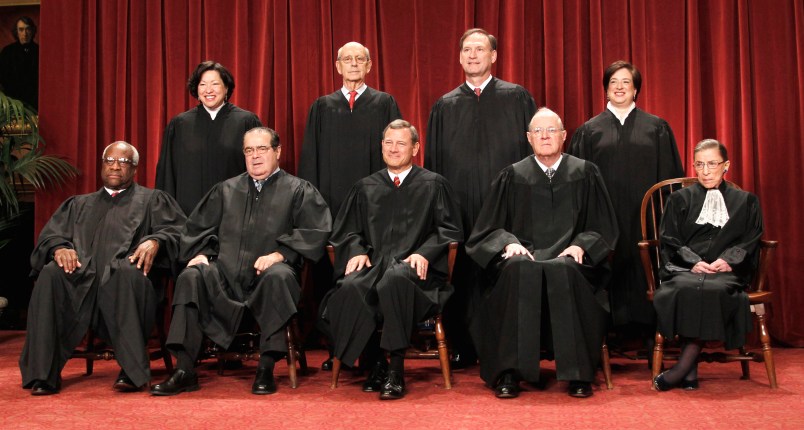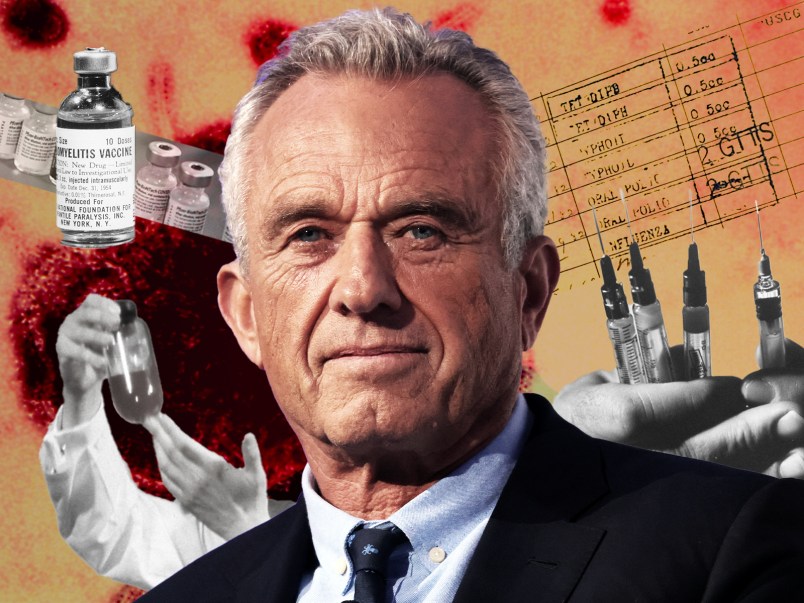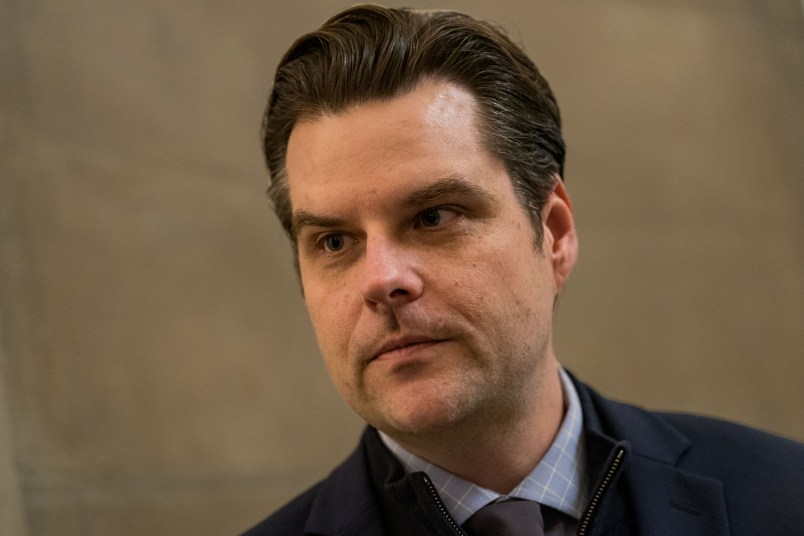UPDATE: April 29, 2015, 1:10 PM EDT
WASHINGTON (AP) — Supreme Court justices are engaging in an impassioned debate about capital punishment — part of Wednesday’s arguments over the use of a single drug that has been used in several botched executions.
The justices heard arguments over the plea of death row inmates in Oklahoma to outlaw the sedative midazolam. They say it is ineffective in preventing searing pain from the other drugs used in lethal injections.
But the hour-plus session featured broader complaints from conservative justices that death penalty opponents are waging what Justice Samuel Alito called a “guerrilla war” against executions by working to limit the supply of more effective drugs.
Among the court’s liberals, Justice Elena Kagan said the way states carry out most executions amounts to having prisoners “burned alive from the inside.”
The unusually combative words came on the court’s last argument day until the fall, and a year to the day after a problematic execution in Oklahoma gave rise to a lawsuit from death row inmates over the use of midazolam.
The outcome itself could turn on the rather narrow question involving the discretion of the federal trial judge who initially heard the lawsuit. He ruled against the inmates, and a unanimous three-judge panel of the federal appeals court in Denver affirmed that ruling.
But justices on both sides gave voice to larger concerns on Wednesday.
“There are other ways to kill people, regrettably, that are painless,” Justice Sonia Sotomayor said.
Justice Antonin Scalia said more effective drugs have been “rendered unavailable by the abolitionist movement.”
The Supreme Court’s involvement in the case began with an unusually public disagreement among the justices over executions.
The court refused to block inmate Charles Warner’s execution in January over the objection of the four liberal justices. In a strongly worded dissent for the four, Sotomayor said, “The questions before us are especially important now, given states’ increasing reliance on new and scientifically untested methods of execution.”
Eight days later, the justices agreed to hear the case of three other Oklahoma prisoners. One possible reason for the different outcomes in what cases to accept is that it takes just four votes among the nine justices to agree to hear a case, but five votes to place a hold on an execution.
Since the January decision to hear the three prisoners’ case, the justices have not prevented other executions from moving forward. Sotomayor and Justices Stephen Breyer, Ruth Bader Ginsburg and Elena Kagan have voted to stop some but not all of those nine executions, which have been carried out in Texas, Missouri and Georgia.
In 2008, the court upheld Kentucky’s use of a three-drug execution method that employed a barbiturate as the first drug, intended to render the inmate unconscious.
But because of problems obtaining drugs, no state uses the precise combination at issue in the earlier Supreme Court case.
___
AP writers Tim Talley and Sean Murphy in Oklahoma City contributed to this report.
Copyright 2015 The Associated Press. All rights reserved. This material may not be published, broadcast, rewritten or redistributed.










Does he have the slightest idea, outside of his own pseudo-intellectual bubble, how ridiculous that sounds? If the companies that produce them are refusing to provide drugs, intended for anesthesia and patient care, as agents of “life-termination”, it’s because it’s contrary to medical ethics and morality.
But, then again, it’s perfectly fine for right-wing, fundamentalist Christians to conduct a guerrilla war against women by denying them access to birth-control because of their sincerely felt religious beliefs. A guerrilla war against executions! Really? So, then Amnesty International and Oxfam, bloodthirsty “thug” organizations that they are, must be conducting a guerrilla war against torture.
The hypocrisy of this man is thunder-striking.
This is getting interesting. I’m beginning to think that the Supreme Court should not only be televised, it should be pay-per-view. That could probably cover a good chunk of its operating budget.
Among the court’s liberals, Justice Elena Kagan said the way states carry out most executions amounts to having prisoners “burned alive from the inside.”
Justice Kagan might be disappointed to discover that at least four of her fellow justices as well as the majority of Republicans consider that to be a feature, rather than a bug.
According to the pseudo-conservatives one hit off a joint will kill you.
They’ve been known to make mistakes.
If you needed a more compelling reason for a Democrat in the WH…I cant think of one better than this. The next president will likely determine the direction of the court for a generation.